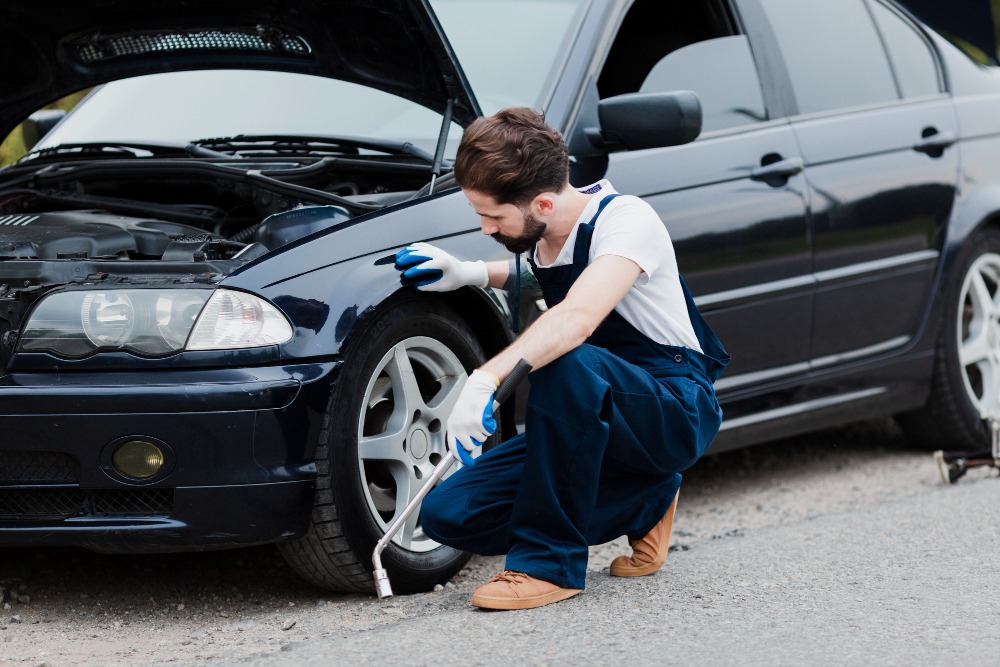Does the thought of car maintenance send shivers down your spine? Visions of expensive mechanics and confusing repair manuals clouding your mind? Fear not, fellow drivers! This comprehensive guide empowers you with essential car maintenance hacks you can tackle yourself, extending the life of your beloved vehicle and keeping it running smoothly for years to come.
Beyond the immediate benefits of saving money on mechanic visits, proactive car maintenance offers a multitude of advantages
- Enhanced Safety: Regular maintenance ensures your car operates at peak performance, minimizing the risk of breakdowns and potential accidents.
- Improved Fuel Efficiency: A well-maintained car burns fuel more efficiently, saving you money at the pump.
- Reduced Emissions: Properly maintained cars contribute to a cleaner environment by reducing harmful emissions.
- Higher Resale Value: A car with a documented maintenance history fetches a better price when you decide to sell it.
So, ditch the fear and grab your toolbox (or a well-stocked glove compartment)! Let’s delve into the world of DIY car maintenance magic and transform you into a confident car care champion.
Safety First: Gearing Up for Success
Before diving in, prioritize safety:
- Consult Your Owner’s Manual: This holy grail of car knowledge provides specific maintenance intervals and instructions tailored to your car model. Refer to it frequently for guidance.
- Gather the Right Tools: Equip yourself with a basic toolkit that includes screwdrivers, wrenches, pliers, a socket set, a flashlight, and a rag.
- Work in a Well-Lit Area: Ensure ample light to see what you’re doing and avoid mistakes.
- Park on Level Ground: Engage the parking brake and use wheel chocks to prevent the car from rolling.
The Essential Maintenance Toolbox: Simple Hacks for a Healthy Car
Now, let’s explore some fundamental car maintenance tasks you can conquer yourself:
- Fluid Fundamentals: Regularly check and top off essential fluids like engine oil, coolant, brake fluid, and windshield washer fluid. Each fluid plays a crucial role in your car’s performance.
- Engine Oil: The lifeblood of your engine! Consult your owner’s manual for the recommended oil type and change it based on mileage intervals. Checking the oil level is a breeze: locate the dipstick, pull it out, wipe it clean, reinsert it fully, and pull it out again to check the oil level against the markings on the dipstick.
- Coolant: Maintains optimal engine temperature. Check the coolant level when the engine is cold by locating the overflow reservoir. The coolant level should be between the “min” and “max” markings.
- Brake Fluid: Critical for safe braking. The brake fluid reservoir is usually translucent, allowing you to visually check the fluid level. If the level is low, consult your owner’s manual for proper topping-off procedures.
- Windshield Washer Fluid: Ensures clear visibility during rain or debris. Top up the reservoir with a pre-mixed washer fluid solution suitable for your climate.
- Tire TLC (Tender Loving Care): Proper tire maintenance promotes safety, fuel efficiency, and extends tire life.
- Check Tire Pressure Regularly: Use a reliable tire pressure gauge (usually found near gas pumps) to inflate tires to the recommended pressure listed on a sticker inside the driver’s door jamb. Don’t forget the spare tire!
- Visual Inspection: Regularly inspect your tires for signs of wear and tear, such as cracks, bulges, or uneven tread wear. Replace tires if the tread depth reaches the wear bars (the small raised indicators within the tire tread).
- Tire Rotation: Rotate your tires regularly according to your owner’s manual recommendations. This promotes even wear and tear.
- Air Filter Finesse: A clean air filter ensures optimal engine performance and fuel efficiency.
- Locate the Air Filter: The air filter housing is typically located in the engine bay. Consult your owner’s manual for its exact location.
- Inspect and Replace: Visually inspect the air filter for dirt and debris. Replace it if it appears clogged or dirty. A clean air filter is usually white or light gray, while a dirty one will be brown or black.
- Wiper Wisdom: Windshield wipers are essential for clear vision during bad weather.
- Check for Wear and Tear: Inspect the wiper blades for cracks, tears, or worn-out rubber edges. Replace them if they streak or don’t make proper contact with the windshield.Battery Boost: A healthy battery ensures a smooth start. While replacing a car battery might be best left to a professional for some, basic maintenance can extend its lifespan.
- Clean the Battery Terminals: Corrosion buildup on the battery terminals can impede electrical connection. Use a wire brush (not a metal brush) and a baking soda solution to clean the terminals and cable connectors.
- Tighten Battery Connections: Ensure the battery cable connections are secure. Loose connections can cause starting problems.
- Lighten Up: Headlights, taillights, and brake lights are crucial for safety. Regularly check their functionality and replace burnt-out bulbs yourself. Most car models allow for easy access to headlight and taillight housings. Consult your owner’s manual for specific instructions on bulb replacement.
- Cabin Air Filter Comfort: A clean cabin air filter improves air quality inside your car by filtering out dust, pollen, and other allergens. Consult your owner’s manual for the location and replacement procedure for your specific car model.
Beyond the Basics: Advanced DIY Hacks for the Savvy Driver (Optional)
Feeling confident? Here are some advanced DIY hacks for the car maintenance enthusiast:
- Spark Plug Replacement: Spark plugs ignite the air-fuel mixture in the engine. Worn-out spark plugs can lead to decreased performance and fuel efficiency. Replacing spark plugs requires some mechanical knowledge and can be a bit more challenging than some of the basic tasks covered earlier. If you’re comfortable with it, consult your owner’s manual and a reliable online guide for specific instructions on spark plug replacement for your car model.
- Serpentine Belt Check: The serpentine belt drives various engine components like the alternator and power steering pump. A worn-out serpentine belt can cause these components to malfunction. Visually inspect the serpentine belt for cracks, wear, or excessive slack. If you notice any signs of wear, consider replacing it.
- Top Off Transmission Fluid (Automatic Transmission Only): For vehicles with automatic transmissions, maintaining proper transmission fluid level is crucial. Consult your owner’s manual for the recommended type of transmission fluid and the proper procedure for checking and topping off the fluid level.
Building a Strong Car Care Routine: Consistency is Key
By incorporating these essential car maintenance hacks into your routine, you’ll be well on your way to a healthier, happier car. Remember:
- Schedule Regular Maintenance: Don’t wait until you experience problems. Schedule regular maintenance tasks based on your owner’s manual recommendations and mileage intervals.
- Consult Your Owner’s Manual: It’s your car’s bible, providing specific maintenance guidance for your model.
- Keep Detailed Records: Maintain a logbook to document your car’s maintenance history, including the date, mileage, and type of service performed. This information will be valuable for both you and any mechanics who service your car in the future.
Conclusion
With a little effort and the knowledge gleaned from this guide, you can transform yourself from a car maintenance novice to a confident DIY master! Taking charge of your car’s care not only saves you money but fosters a sense of accomplishment and self-reliance. Remember, preventative maintenance is key to keeping your car running smoothly for miles to come. Happy and empowered motoring!


